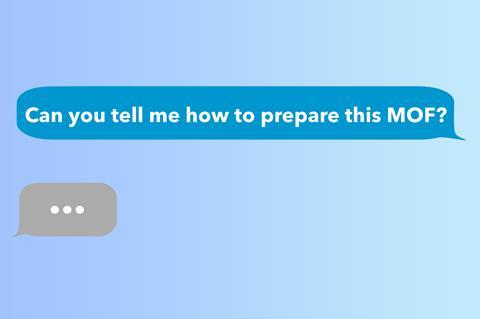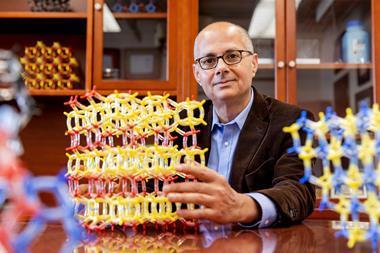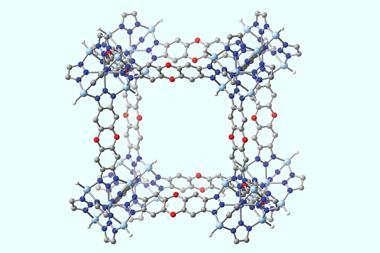Accessible AI tool can assess multitude of protocols for making new porous materials
Using ChatGPT to mine metal-organic framework (MOF) synthesis data allows researchers to predict the best conditions for making new materials. This accessible technology will accelerate research activities and bridge the gap between computational and synthetic scientists.

Artificial intelligence (AI) is being extensively employed in laboratories to assist researchers in various ways. However, this often involves bespoke models built from scratch, requiring expert coding knowledge. Instead, Omar Yaghi and his team at the university of California, Berkeley in the US, have taken advantage of OpenAI’s already available ChatGPT tool, using careful prompting to make it perform the desired tasks.
The team trained ChatGPT to extract and analyse MOF synthesis literature, automatically reading and processing hundreds of papers in a matter of days, compared to the months it could take manually. The almost limitless possible combinations of metal ions and organic linkers that can be used to construct MOFs gives these porous materials their extraordinary chemical tunability. But the diversity of methods and absence of a standardised format for reporting MOF synthesis makes working out how best to approach making a given combination a laborious and challenging task, and one ideally suited to automation.
‘We have always been interested in simplifying and speeding up chemical synthesis and making it more predictive’ says Yaghi. The predictive power of AI can increase productivity, allowing researchers to take on more complex projects by removing some of the trial-and-error element of synthesising new materials. He further explains ‘the instructions provided to ChatGPT require no advanced knowledge of programming’, relying only on everyday, conversational language, meaning all scientists can use the software regardless of coding background.
Manuel Tsotsalas, whose group works on MOFs at the Karlsruhe Institute of Technology in Germany, echoes these sentiments, ‘these chat interfaces allow me to do computational work without having to know how to do coding. It’s not that I think this chat AI would substitute my work, but it will just make it much faster.’
The Berkeley group expects that AI models could eventually help create new materials to address problems relating to climate change. This includes transforming carbon dioxide into clean fuels, or harvesting water from desert air for drinking and irrigation. Tsotsalas agrees that this research is a ‘really nice example of how you can develop materials for such challenging, urgent issues.’
Yaghi is interested in exploring other applications of ChatGPT and similar Large Language Models (LLMs), allowing humans to concentrate on the more intellectual aspects of research while AI manages the laborious tasks. He hopes that they will be used across various scientific disciplines, opening new avenues for collaboration between humans and AI.
References
Z Zheng et al, J. Am. Chem. Soc., 2023, DOI: 10.1021/jacs.3c05819

















No comments yet